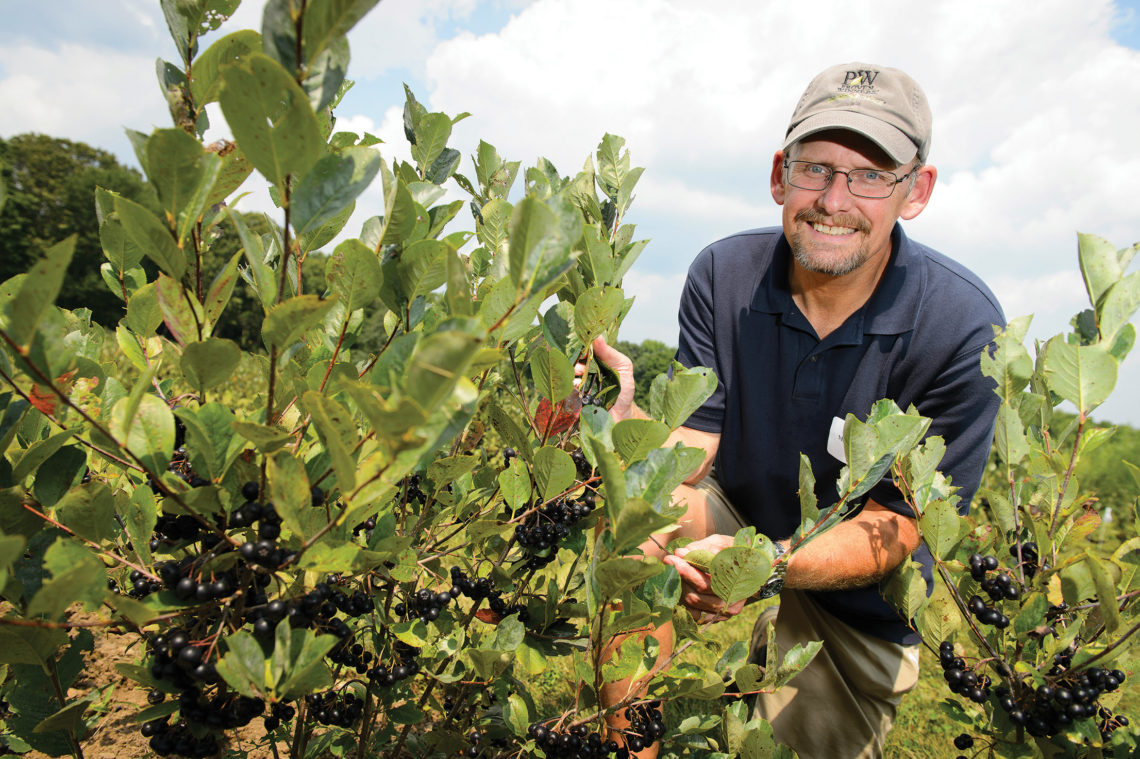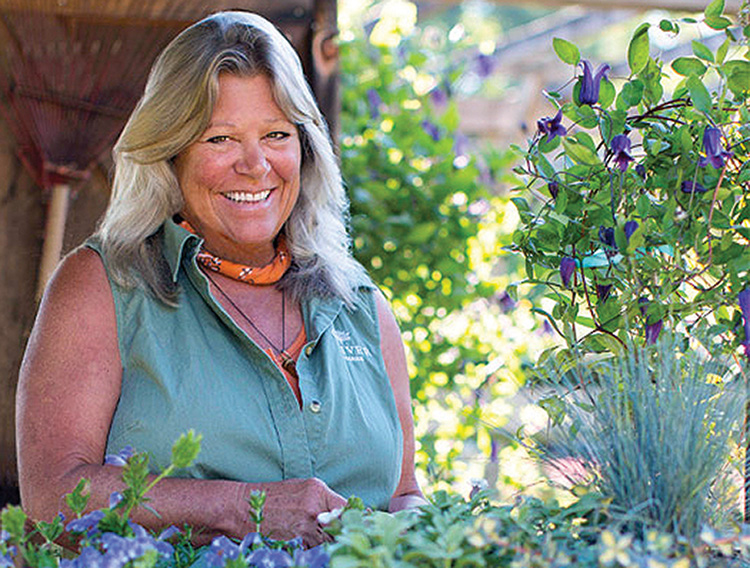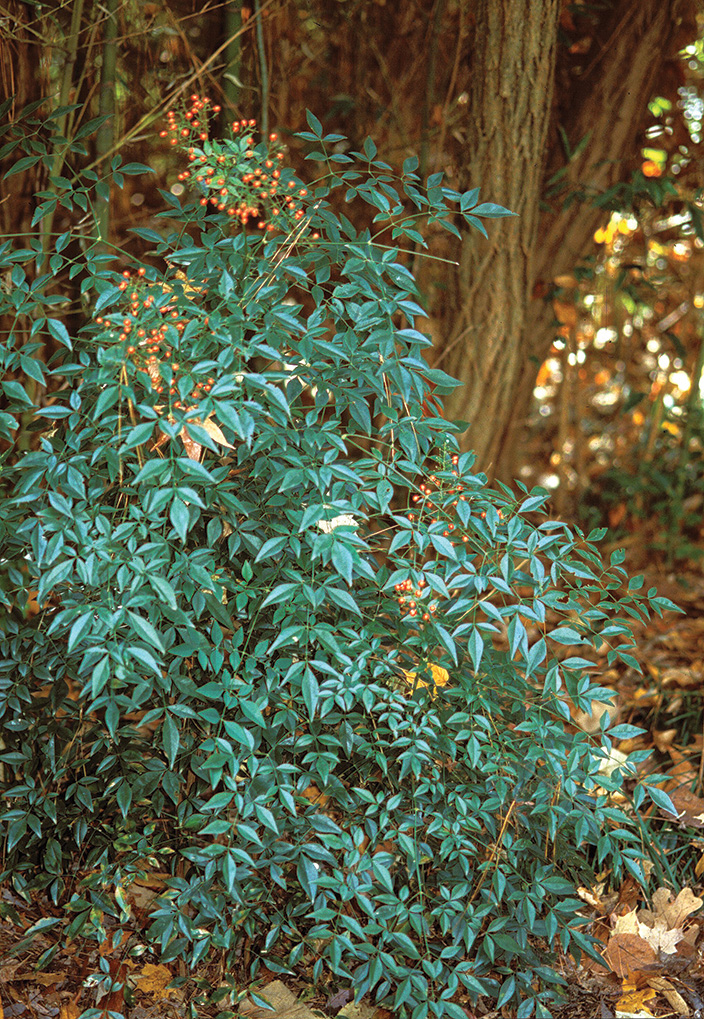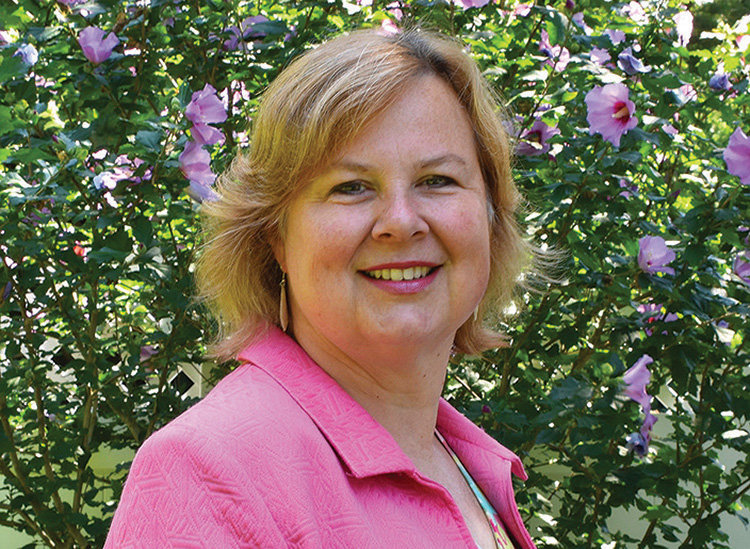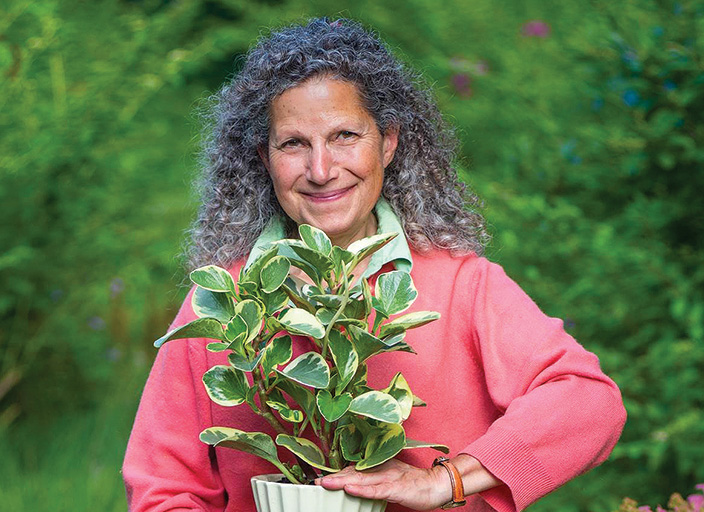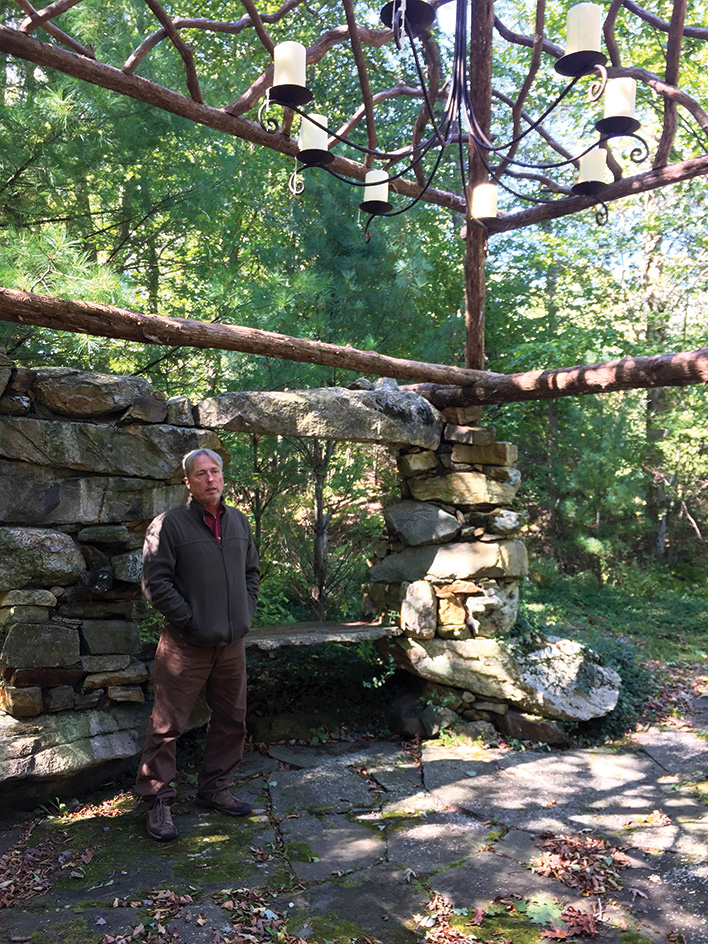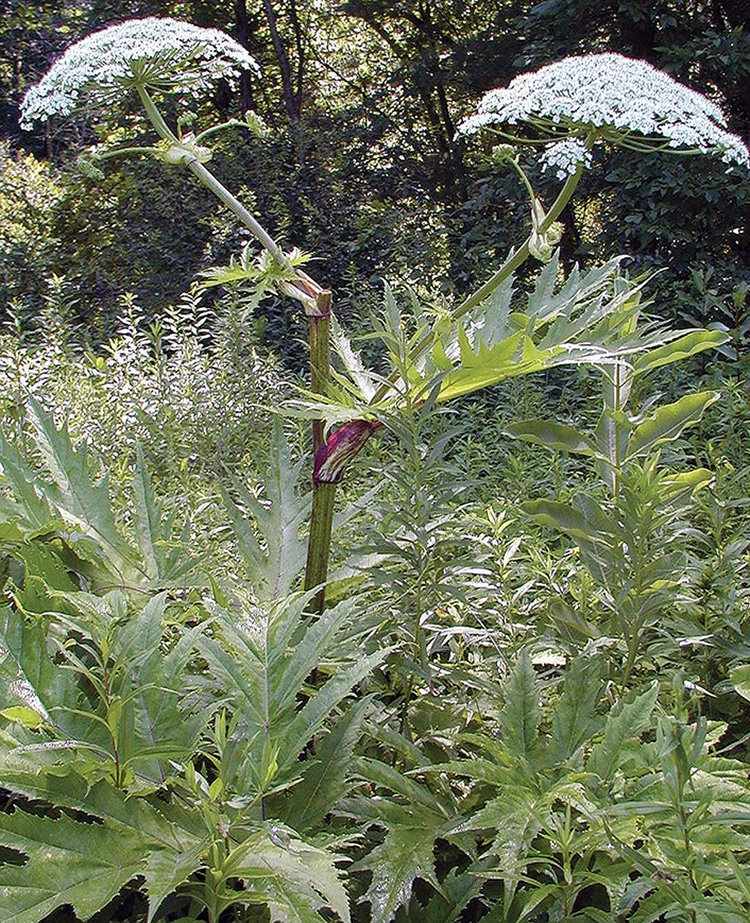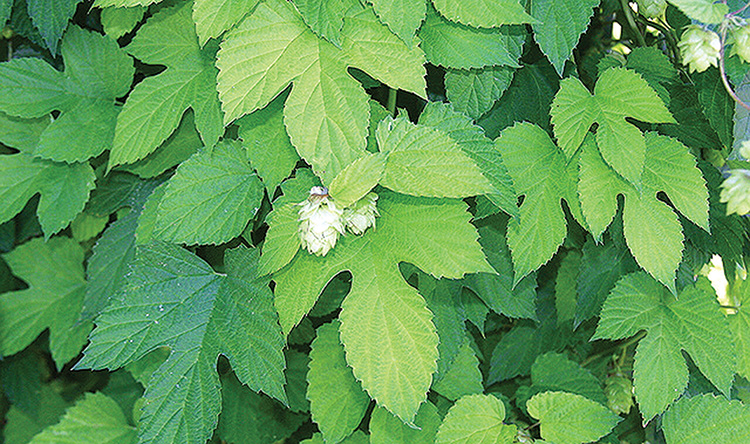JULY-AUG 2018 – Mark Brand, a professor of horticulture at UConn, recently introduced two new varieties of black chokeberry: Low Scape® Mound (UC165) and Low Scape® Hedger (UC166). Black chokeberry (Aronia melanocarpa) is native to the Eastern U.S. so we can use the term nativar instead of the more generic cultivar. Nativar is a term coined by Dr. Allan Armitage to indicate cultivars and hybrids derived from native plants. There’s a growing interest in using native plants and an increasing demand for improved varieties that perform well in our landscapes. The development process, which used traditional hybridizing techniques, took about 10 years. Both of these varieties flower on old wood…
-
-
Hypertufa Containers
JULY-AUG 2018 – Lori Chips is the Alpine Manager at Oliver Nurseries in Greenfield Hill (Fairfield). She has been working and experimenting with Alpines for decades. Hypertufa containers – also known as troughs – are perfect for small, Alpine plants. A mix of cement, perlite, peat, and water, they can even be made at home. Hypertufa Containers tells you everything you need to know to make your own troughs. It features step-by-step instructions for making hypertufa containers in a variety of shapes and sizes. The instructions are easy to follow and are illustrated with color photography. You’ll also learn about a variety of plants that work well in troughs. Chips…
-
Seeing Seeds
JULY-AUG 2018 – Seeing Seeds: A Journey into the World of Seedheads, Pods, and Fruits is part art book and part primer. Robert Llewellyn’s stunning images are created using image stacking. He photographs the subject from slightly different angles and the resulting images are combined by software. The final product is in sharp focus but seems like botanical art. Teri Dunn Chace provides the text which is peppered with fascinating facts and interesting quotes. You’ll learn about a lot more than just monocots and dicots as she explains how seeds work. The main portion of the book is devoted to specific examples of interesting seeds. You’ll gain a better appreciation…
-
Nandina domestica – Early Warning
MAY-JUNE 2018 – Sacred or Heavenly Bamboo (Nandina domestica) hasn’t been reported in Connecticut … yet. We normally don’t highlight invasives until they’re on the radar of the Connecticut Invasive Plant Working Group (CIPWG – cipwg.uconn.edu) but we’re making an exception for this plant. Keep your eye out and you may be the first to spot it. It’s better to catch these things early because it increases the chance that new invasives will be found and eradicated before they establish a foothold. People in the invasive field call it EDRR (Early Detection Rapid Response). This is increasingly important as climate change brings us a new suite of invaders. Not actually…
-
Success with Hydrangeas
MAY-JUNE 2018 – Lorraine Ballato, a long-time contributor to Connecticut Gardener, recently published her second book, Success with Hydrangeas – A Gardener’s Guide. Lorraine is an acknowledged expert on the subject and teaches a course on hydrangeas at the New York Botanical Garden. If you’re having trouble with your hydrangeas, or just love them, you should get this book. When a garden includes hydrangeas, you can count on months of consistent carefree color if you know what to do with them. Success with Hydrangeas gives tips for both pros and novice gardeners alike on how to grow this popular shrub. Each of the 13 chapters covers the whys and wherefores…
-
The Garden Tourist
MAY-JUNE 2018 – Jana Milbocker’s new book, The Garden Tourist, highlights 120 gardens and nurseries in the Northeast, 18 of which are in Connecticut. It includes locations from all over New England, as well as New Jersey, New York and Pennsylvania. The book is organized by state and each chapter begins with suggested daily itineraries that include ideas for lunch. Each garden is described in detail. Contact information and photos are included. The Garden Tourist provides a broad selection for weekend gardeners, landscape professionals and vacation travelers. Milbocker owns Enchanted Gardens, a landscape design firm based in metrowest Boston. The Garden Tourist – Softcover, 6.5″ x 9,” 256 pages, 665…
-
The Garden in Every Sense & Season
MAY-JUNE 2018 – Tovah Martin is more than just a top-notch garden writer, she’s a Connecticut treasure. We’re always excited when we schedule her for a story. Tovah is the author of more than a dozen books on gardening and is a long-time contributor to Connecticut Gardener. She knows gardening from all sides and is well aware that we often have long to-do lists that can make garden-ing seem more like a chore than an avocation. In The Garden in Every Sense and Season, Tovah reminds us to focus less on the checklists and more on enjoying the journey. Martin explores all of the senses in 100 essays that share…
-
The Branch Manager
By Anne Rowlands MARCH-APRIL 2018 – Meet Christopher Hawver who – in the late ’90s after 18 years as a celebrated chef – chose to make a career change and pursue life as a rustic furniture maker. Why the switch? Like so many of us who find inspiration and comfort in a natural setting, Hawver was looking for a way into the woods. In his youth, he wondered how to make it possible. Could he be a forest ranger? A fishing or hunting guide? At age 15, however, the door to the woods swung shut when he began a culinary journey that lasted many years until – after taking up…
-
Beware the Giant Hogweed
MARCH-APRIL 2018 – Giant hogweed (Heracleum mantegazzianum) is aptly named. This monster can grow to a height of 20′ and is some-times described as Queen Anne’s lace on steroids. Giant hogweed is a member of the carrot family (Apiaceae) and is native to the Caucasus Mountains in Western Asia, between the Black Sea and the Caspian Sea. It was brought to England and planted at Kew Gardens as an ornamental in the late 1800s and subsequently spread to other parts of the world. It’s considered invasive in Connecticut and is listed as a federal noxious weed in the U.S. According to the Connecticut Invasive Plant Working Group (CIPWG) it was…
-
In Search of Native Hops
SEPT-OCT 2017 – Prior to prohibition, common hops, Humulus lupulus, were grown in Connecticut by folks brewing their own beer. Some of these may have survived in the wild, but may be confused with the invasive Japanese hop, Humulus japonicus. If common hops were found growing locally, they could possibly be more resistant to diseases (e.g., downy mildew) than cultivated varieties. Target breeding this disease resistance into a domesticated variety could reduce pesticide use for locally grown hops. The species are easy to distinguish as common hop leaves are three-lobed or non-lobed while Japanese hops have 5-7 (sometimes 9) lobes. If you find any common hops, please provide Dr. Jim…
